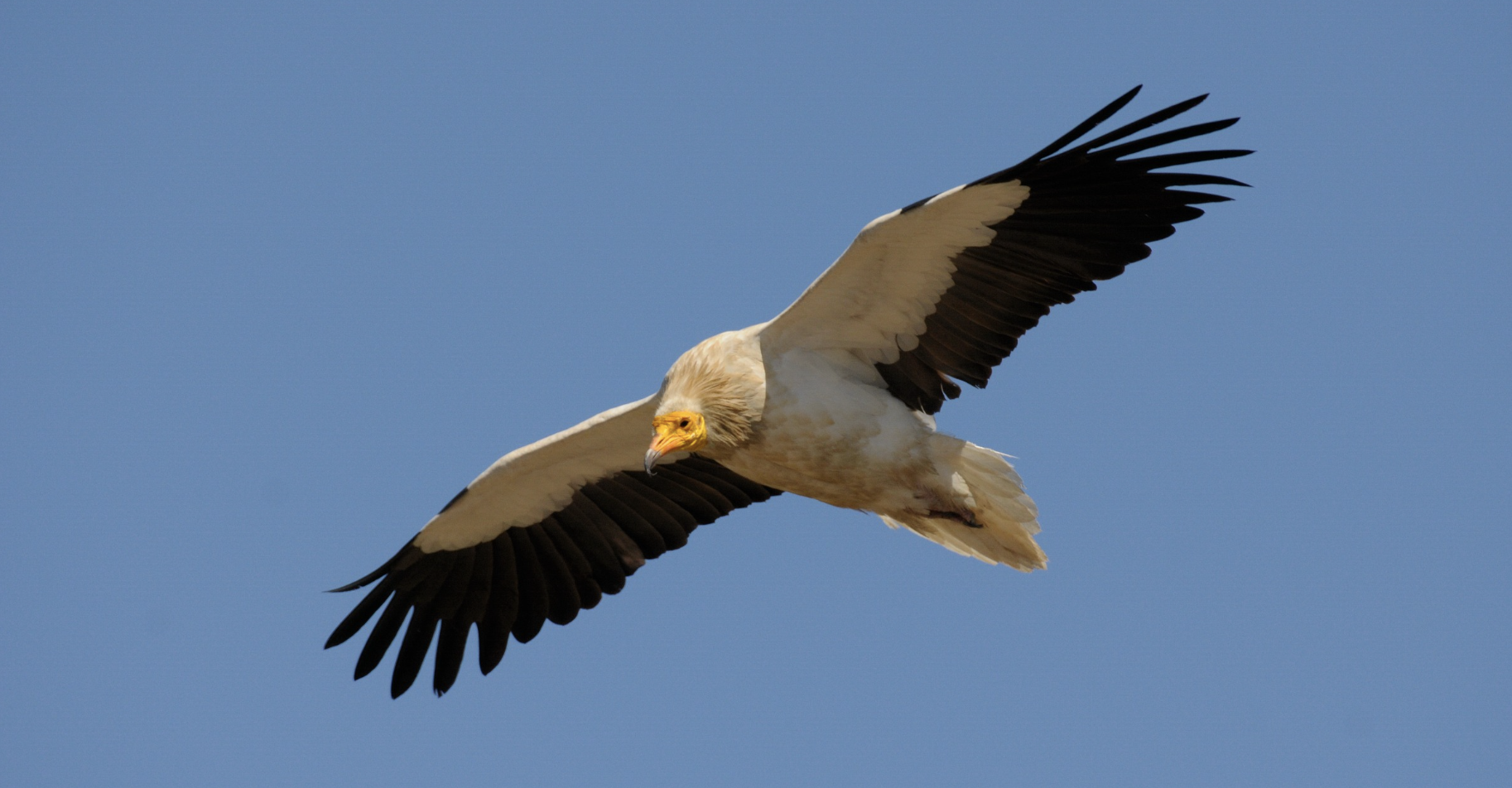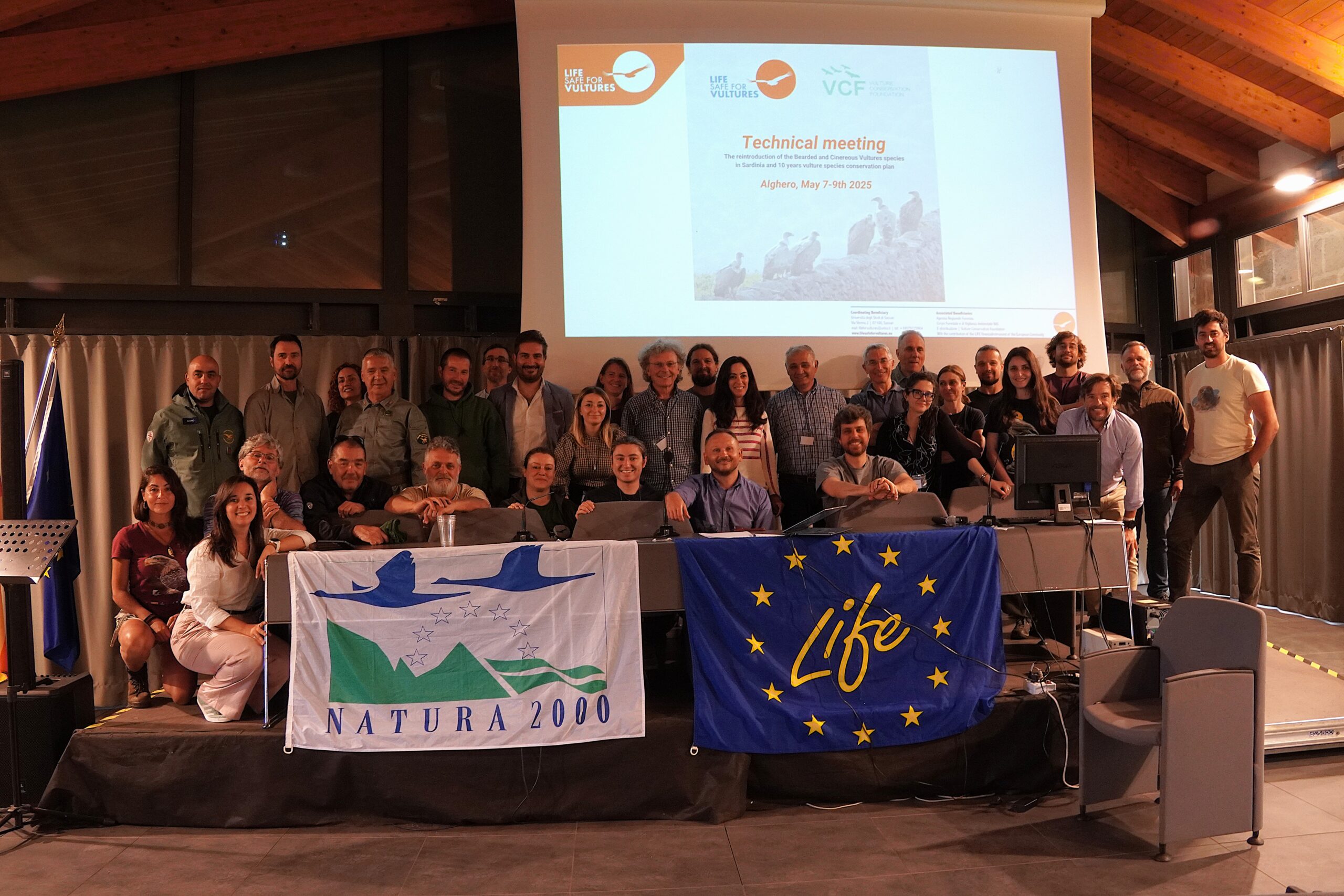
Since they arrived in Bulgaria earlier in the March 2019, three young captive-bred Egyptian Vultures have been adapting to their new home in the Eastern Rhodope mountains in a specially constructed aviary and earlier this month the doors were opened and the birds were released. How have they been experiencing their first few weeks of freedom?
Testing different release techniques
Over five years the Egyptian New LIFE project is testing different techniques of releasing captive-bred Egyptian Vultures and 2019 is the second year of the unique experiment. On Wednesday 15 May the team opened the door of the aviary built in the Eastern Rhodopes where the one year old birds, Fer (donated by Zoo Zoobotánico Jerez, Spain), Andi (donated by the Zoo Vienna Schönbrunn Zoo in Vienna, Austria) and Sharka (donated by the Zlín-Lešná Zoo in the Czech Republic) as part of the delayed release technique. Before they were released all three were fitted with GPS transmitters to track their movements as they explored their new home.
First flights of freedom

Sharka first left the aviary after opening the doors, followed by Fer and finally Andi. Andi settled in the area of the feeding station, and a few hours later he started feeding at it. Since then he is visiting the feeding station regularly and roosting on the cliff. Fer settled on the same cliff near the station and for the first few days, he was busy mastering the art of flying by making short circles around the rocks and seen with other Egyptian Vultures and Ravens in the area.
Both have been staying close to the release site and feeding station, spending a few hours there each day and seen socialising with other residents including the Griffon and Cinereous Vultures and are quickly gaining confidence and improving their flight abilities.
Tragedy strikes

Sharka was the most skillful flyer, and after leaving the aviary he moved 1.5 km from the release site and settled on a steep rocky slope with a perfect view towards the feeding station. In the early days after the release, he also practiced flying and even was attacking adult Egyptian Vultures that were passing over his area.
Unfortunately, on the third night of freedom, he was assaulted and killed, likely by a Fox, and in the morning a team recovered his remains. Predator attacks cause mortality to wild young Egyptian Vultures as well, especially in the first days after fledging when the birds do not have enough experience.
The next few months will be very important and intense for Andi and Fer who will face all the challenges of life in the wild. They have to build confidence and experience before facing the ultimate challenge for every young Egyptian Vulture – the first autumn migration to Africa! We expect Fer and Andi to grow stronger and to explore the Eastern Rhodopes in the coming weeks.
The Egyptian Vultures released in 2018

As Andi, Fer and Sharka took their first flights to freedom the team also detected activity from the birds released in 2018. Three of the four birds released via the delayed release technique successfully made it to sub-Saharan Africa, the fourth, Panteley made it as far as Crete.
Akaga migrated through Turkey and the Arabian Peninsula to reach Ethiopia and has spent the winter there. However, the team had not been receiving any data from the GPS transmitter for the last four months and feared the worst. It was with much excitement and relief that a few weeks ago they started getting data and noticed Akaga was on the move and heading north.

Another of the birds, Panteley has also began a northward move. Panteley made it to Crete on their migration but unlike Boyana who used a similar route, didn’t make the final sea crossing to Africa and instead spent the winter on the island. Over the last couple of days Panteley has headed north from the island and is now on mainland Greece, maybe they will make it all the way back to Bulgaria to spend the summer

With this news all four birds released via delayed release in 2018 are alive and well.
Egyptian Vulture New LIFE

Working collaboratively projects like the Egyptian Vulture New LIFE aims to reinforce the Egyptian vulture population in their Europe’s easternmost range across the Balkans. By actively managing and restocking the population by releasing captive-bred birds the project will support the small Balkan population which number between 60 and 80 pairs across the whole region. The project is working to deliver conservation measures that eliminate major known threats such as illegal poisoning and electrocution in their summer breeding grounds. Monitoring the population closely using GPS transmitters will also help the project tackle the major threats Egyptian vultures face. The Egyptian Vulture New LIFE is a partnership of organisations, led by the Bulgarian Society for the Protection of Birds from 14 countries spanning Europe, the Middle East and Africa, to protect Egyptian vultures not only in Europe but all along their migratory flyway.




